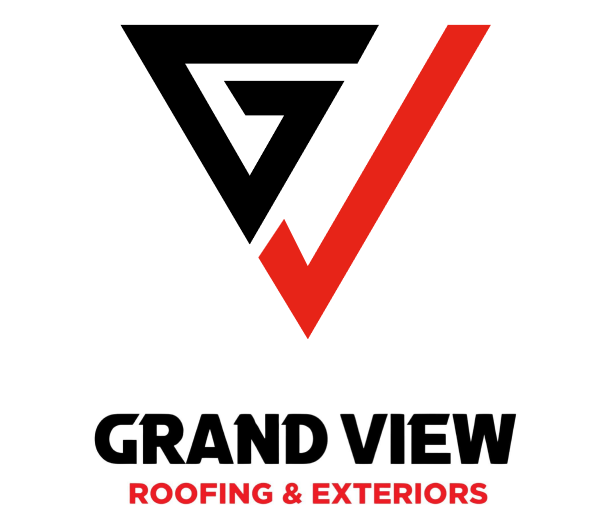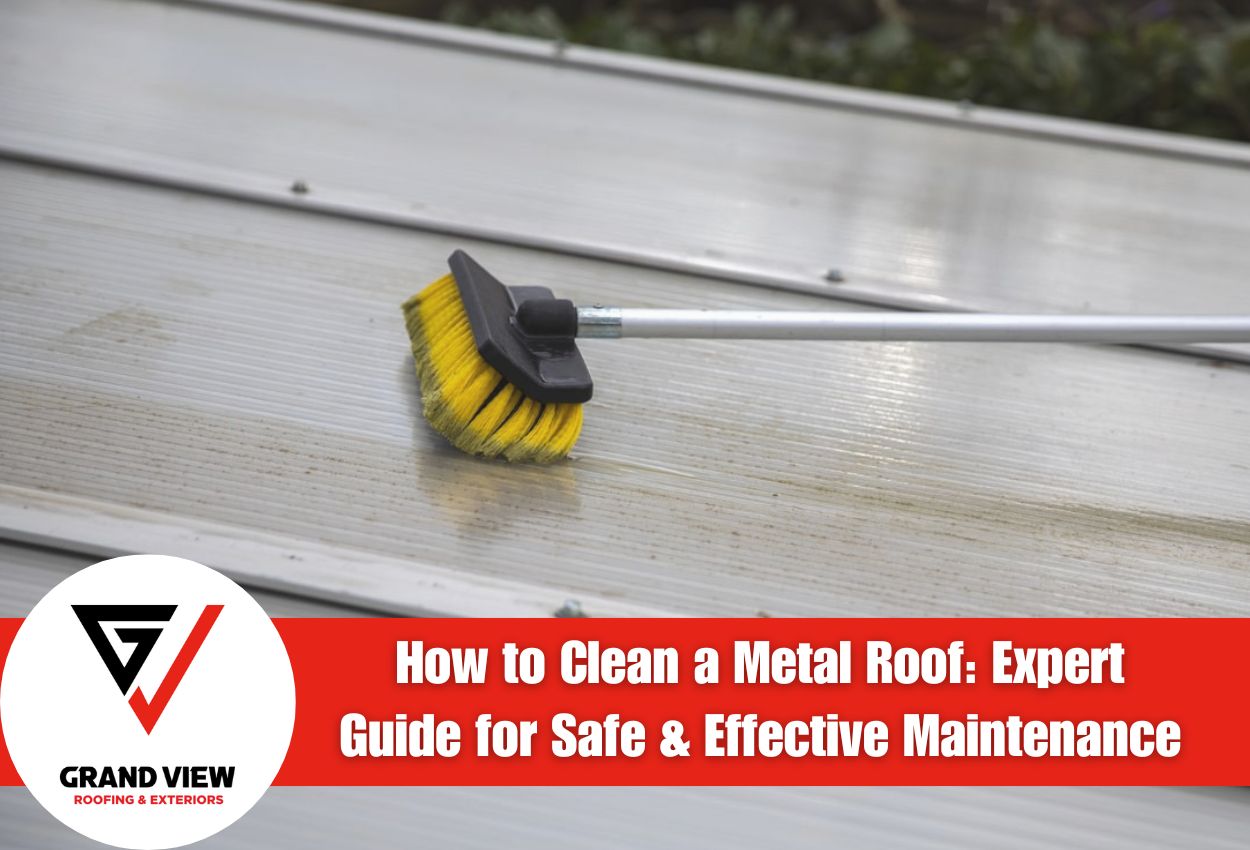Metal roofs are popular in South Jersey for their durability, energy efficiency, and striking appearance. However, even these robust roofing systems require regular maintenance to maximize their lifespan and preserve their curb appeal. Over time, metal roofs can accumulate dirt, organic debris, mildew, and stubborn stains that not only diminish their appearance but may eventually compromise their structural integrity. Proper cleaning techniques are necessary to maintain your roof without causing damage to its protective coatings or the underlying materials.
Effective metal roof cleaning involves more than simply spraying water on the surface. It requires understanding the specific type of metal roofing material you have, selecting appropriate cleaning solutions, and using the right tools and techniques. Whether dealing with moss growth in shaded areas, removing stubborn black streaks, or conducting routine maintenance, a step-by-step approach ensures optimal results. Professional roofing contractors recognize that different contaminants require different removal methods and that safety precautions are non-negotiable when working at heights.
Before attempting DIY metal roof maintenance, homeowners should be aware of the potential risks and proper procedures. The right preparation, including gathering safety equipment and suitable cleaning supplies, sets the foundation for successful metal roof cleaning that extends the life of your roofing system while maintaining its curb appeal.
Safety First: Preparing to Clean Your Metal Roof
Before tackling any metal roof cleaning project, safety preparations are essential. Start by assessing your roof’s condition from the ground using binoculars to identify problem areas. When setting up your ladder, ensure it extends at least 3 feet above the roof edge and is secured on level ground. Always use a sturdy ladder with stabilizers and have a helper spot you when possible.
Personal protective equipment is non-negotiable for metal roof cleaning. Wear rubber-soled shoes, heavy-duty gloves, and safety goggles to shield your eyes from cleaning solutions and debris. Fall protection gear, including safety harnesses, is also recommended for steeper roof pitches. Many South Jersey homeowners underestimate the importance of these basic safety measures, which our professional team always prioritizes.
Weather considerations play a crucial role in metal roof cleaning safety and effectiveness. Choose an overcast day with mild temperatures between 60 to 75 degrees Fahrenheit, as hot metal roofs can cause cleaning solutions to evaporate too quickly, while rain creates dangerous slippery conditions. Early morning hours work best to avoid afternoon heat, especially during South Jersey summers. Never clean your metal roof during windy conditions, thunderstorms, or when frost or dew is present.
Planning your roof cleaning for spring or fall typically provides ideal conditions for removing moss growth, algae buildup, and accumulated debris while ensuring your metal roof remains in optimal condition throughout the year.
Common Metal Roof Contaminants to Know
Understanding what’s up on your metal roof is essential for effective cleaning. In South Jersey’s humid climate, algae often appears as dark streaks or discoloration, particularly on north-facing sections that receive less sunlight. Moss presents as a thicker, green growth, typically found in shaded areas where moisture lingers after rainfall. Mildew and mold usually manifest as black or brown spots that can spread rapidly if not addressed.
Beyond organic growth, metal roofs commonly collect pollen, tree sap, bird droppings, and airborne pollution that create a dingy appearance over time. After coastal storms, salt residue can also accumulate on metal surfaces throughout South Jersey communities. Regular inspections allow homeowners to catch these issues before they become more difficult to remove.
To assess contamination, walk the perimeter of your home and use binoculars to examine your roof from different angles. Look for color changes, textured areas, or visible growth. The severity of contamination can be determined by noting whether the buildup wipes away easily with a damp cloth or appears firmly attached to the metal surface. For roofs with significant organic growth, a gentle scrape test can help determine how tenacious the growth has become.
Different contaminants require specific cleaning approaches. While light dirt might need only a gentle wash, established moss may require specialized treatments to ensure complete removal without damaging your metal roof’s protective finish.
Gentle Cleaning Methods for Routine Maintenance
Regularly cleaning your metal roof prevents buildup and extends its lifespan. For most South Jersey homes, gentle cleaning methods are sufficient for routine maintenance and can be performed safely without specialized equipment. These approaches preserve your roof’s protective coating while effectively removing common contaminants.
Soft washing is ideal for metal roof cleaning, using a garden hose to dislodge dirt without damaging panels. Always maintain the nozzle at least 12 inches from the roof surface and spray at a downward angle following the roof’s pitch. Work from the top down in small sections, allowing water and loosened debris to flow naturally off the roof. This technique is particularly effective for removing pollen, dust, and light organic matter that accumulates seasonally.
For spot cleaning or smaller metal roof areas, manual methods offer precise control. Use soft-bristled brushes with telescoping handles to reach higher sections safely from a ladder. Apply a manufacturer-approved cleaning solution with a pump sprayer, allow it to sit briefly, then gently scrub in the direction of the metal panels, never across seams or against the grain. Microfiber mops and soft cloths are excellent for final wipe-downs of stubborn spots without scratching your roof’s finish.
Remember that gentler approaches might require more time, but protect your metal roof by preserving its appearance and structural integrity for years to come.
Tackling Stubborn Stains and Organic Growth
Even with regular maintenance, your metal roof may develop stubborn stains or persistent organic growth that requires more targeted treatment. When standard cleaning methods fall short, specialized approaches become necessary to restore your roof’s appearance without compromising its integrity.
For tough stains on metal roofing panels, eco-friendly solutions offer effective results without harsh chemicals. A mixture of one part white vinegar to two parts water works well on algae spots and mineral deposits common on South Jersey homes. For more stubborn discoloration, a paste made from baking soda and water applied with a soft brush can gently lift stains without scratching protective coatings. Allow these solutions to work for 15 to 20 minutes before rinsing thoroughly with clean water.
Moss and algae require specific treatments as they can trap moisture against metal surfaces, potentially leading to corrosion. Apply a mixture of 1 cup oxygen bleach dissolved in 2 gallons of water to affected areas, letting it sit for 20 minutes before gently scrubbing with a soft-bristled brush. For extensive growth, zinc or copper strips installed near the roof ridge create metal ions that naturally inhibit organic growth when rainwater washes over them — a preventive solution many professional roofers recommend.
Remember that commercial roof cleaners specifically formulated for metal surfaces can be effective, but always check the manufacturer’s instructions to ensure it is compatible with your specific roof coating. After any cleaning treatment, a thorough rinse is essential to prevent residue that might damage your metal roof over time.
DIY Metal Roof Cleaning Solutions vs. Commercial Products
When it comes to cleaning your metal roof, you have options between homemade solutions and store-bought products. Many South Jersey homeowners prefer DIY mixtures that are gentle on their roof while being environmentally responsible. A simple yet effective homemade cleaner consists of 1/4 cup phosphate-free dish soap mixed with 1 gallon of water, which works well for general cleaning without harming the surrounding landscaping.
As mentioned above, water and white vinegar, a paste using baking soda and water, and diluted oxygen bleach solutions provide excellent results for broader organic growth without the harsh environmental impact of chemical solutions. These homemade options are a great choice for metal roofs near gardens or water features where runoff concerns exist.
Commercial metal roof cleaners become worthwhile investments when facing severe contamination issues. Look for products specifically formulated for your roof’s metal type and coating. Professional-grade cleaners often contain specialized chemicals that break down stubborn tree sap, heavy industrial fallout, or extensive moss buildup more effectively than DIY solutions. These products typically require less scrubbing, which reduces the risk of damaging protective finishes through excessive scrubbing.
Whether choosing DIY or commercial cleaners, always test in a small area first and rinse thoroughly to prevent residue that could potentially damage your metal roof over time.
Preventive Measures and Maintenance Schedule
Maintaining your metal roof’s pristine condition is much easier than dealing with extensive cleanup later. Installing zinc or copper strips along the roof ridge creates a natural defense system against moss and algae. When rainwater flows over these metals, it carries tiny amounts of metallic ions that inhibit organic growth across the entire roof surface. For South Jersey homes with nearby trees, trimming branches back not only prevents debris accumulation but also reduces moisture retention that leads to algae and moss growth.
Gutter maintenance plays a crucial role in metal roof health. Clean gutters twice annually, once in late spring and again in late fall, to prevent water backup that can damage roof edges. Installing gutter guards might be a worthwhile investment for homes surrounded by deciduous trees common throughout South Jersey neighborhoods.
The ideal cleaning schedule for metal roofs in South Jersey’s climate includes a thorough inspection every spring to address winter damage and remove pollen buildup. Schedule a comprehensive cleaning every few years for homes in open areas, but increase frequency to annual cleanings for properties under heavy tree coverage. Fall maintenance should focus on removing leaves and preparing the roof for winter precipitation.
During summer months, watch for signs of excessive heat expansion and contraction that might affect seams. After severe storms, conduct quick visual inspections to identify any new issues requiring immediate attention. This proactive approach extends your metal roof’s lifespan while maintaining its energy efficiency benefits year-round.
Expert Metal Roof Cleaning Solutions in South Jersey
Maintaining your metal roof not only enhances its appearance but can also add years to its lifespan, protecting your investment over time. At Grand View Roofing & Exteriors, we understand the challenges that come with cleaning metal roofs in South Jersey, including dealing with stubborn stains and organic growth like moss and algae. Our team uses specialized, eco-friendly cleaning solutions and techniques to tackle these issues without damaging your roof.
If you’re unsure about the right approach to cleaning your metal roof or if you find the task too daunting, don’t hesitate to call us. Let the professionals handle it and ensure your roof remains in pristine condition. Contact Grand View Roofing & Exteriors today at (856) 305-9883 to schedule your roof cleaning or to consult about the best maintenance practices for your home.





 Call Us Today - (856) 305-9883
Call Us Today - (856) 305-9883 
